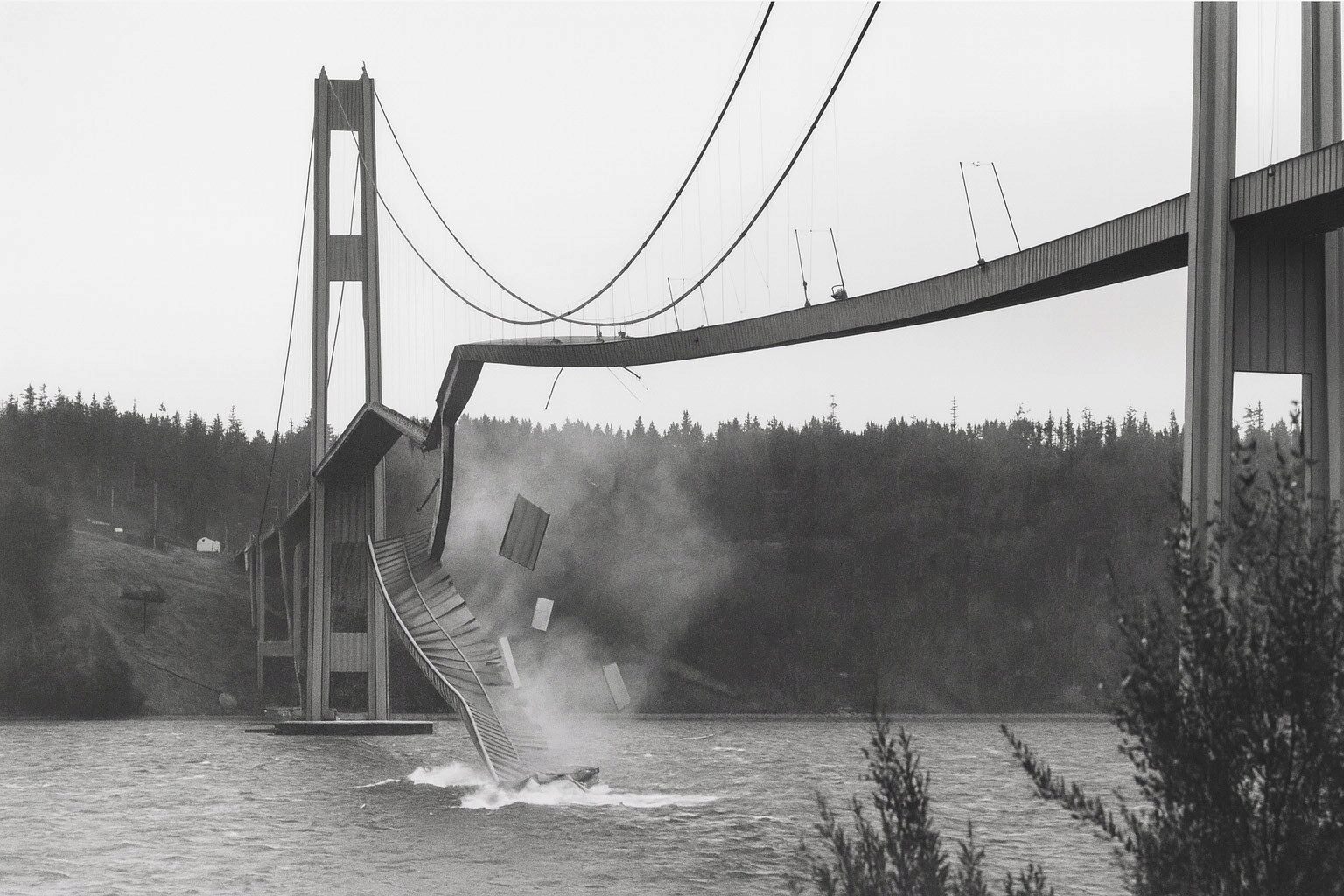In July 1940, the Tacoma Narrows Bridge opened with great fanfare. Stretching nearly 6,000 feet across Puget Sound, it was the third-longest suspension bridge in the world — sleek, efficient and by all accounts a triumph of modern design.
It was also one of the cheapest bridges of its kind ever built.
Engineers had been under pressure to keep costs down. To save money, they used thinner steel girders, reducing both weight and expense. The bridge was narrow and elegant, with a deck so slender that it moved easily in the wind. Workers nicknamed it “Galloping Gertie” even before it opened because of the way it swayed.
Still, the public loved it. On opening day, drivers paid 75 cents to cross and were treated to what one reporter called “the most beautiful bridge in the world.” For four months, all seemed fine. Then, on Nov. 7, 1940, a strong wind swept through the Tacoma Narrows. The bridge began to twist and buckle. Within hours, it tore itself apart and collapsed into the water below.
The total loss: $6.4 million in 1940 — about $140 million today.
Investigators later found that the design’s fatal flaw wasn’t just its inability to withstand high winds or the use of lighter, lower-cost materials. It was the assumption that a cheaper, untested design would hold up like the more expensive ones. The shortcuts had saved money — right up until they cost everything.
We see this same story repeated today, though in less dramatic fashion. A ministry wants to save money, so it chooses the cheapest web platform it can find. The website looks fine on the surface, but underneath it’s held together by unverified plug-ins, borrowed code and developers no one really knows. For a while, it works. Then the “wind” starts blowing — a security breach, a failed update, a broken integration — and the entire system begins to sway.
By the time the damage is done, the savings are gone and the fallout often extends beyond rebuilding. Lost data, broken trust and damaged reputations can take years to restore, costing far more than doing it right the first time.
At Radiant, we built Radiant WebTools for organizations that value stability, stewardship and security. Every part of our system is designed and tested by our own team — no mystery code, no abandoned plug-ins, no hidden dependencies. We know what every line of code does because we wrote it.
We’ve seen the “Galloping Gerties” of the digital world: websites that look elegant but collapse under pressure. That’s why we help ministries build strong foundations that last, no matter which way the wind blows.
Because in the end, a bridge is only as strong as what holds it together.





